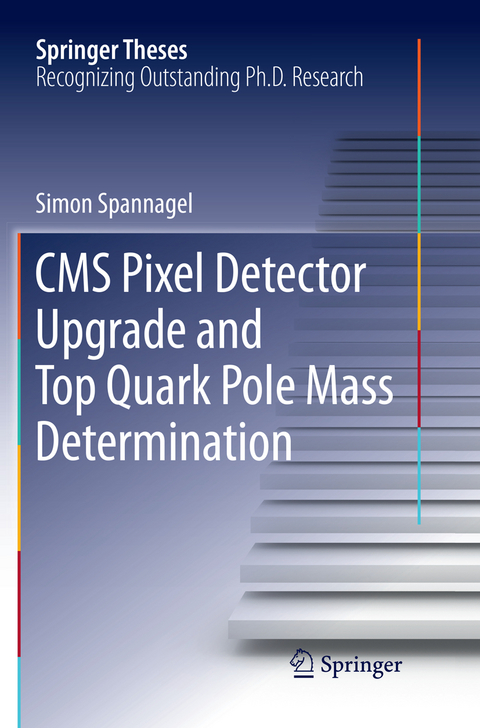
CMS Pixel Detector Upgrade and Top Quark Pole Mass Determination
Springer International Publishing (Verlag)
978-3-319-86498-3 (ISBN)
The first part focuses on the development and characterization of silicon pixel detectors. To account for the expected increase in luminosity of the Large Hadron Collider (LHC), the pixel detector of the compact muon solenoid (CMS) experiment is replaced by an upgraded detector with new front-end electronics. It presents comprehensive test beam studies conducted to verify the design and quantify the performance of the new front-end in terms of tracking efficiency and spatial resolution. Furthermore, it proposes a new cluster interpolation method, which utilizes the third central moment of the cluster charge distribution to improve the position resolution.
The second part of the thesis introduces an alternative measurement of the top quark mass from the normalized differential production cross-sections of dileptonic top quark pair events with an additional jet. The energy measurement is 8TeV. Using theoretical predictions at next-to-leading order in perturbative Quantum Chromodynamics (QCD), the top quark pole mass is determined using a template fit method.
Introduction to Particle Physics at Hadron Colliders.- The CMS Experiment at the LHC.- Basic Concepts of Semiconductor Tracking Detectors.- The CMS Pixel Detector for Phase I.- Simulation of CMS Pixel Detector Modules.- The pixar Data Acquisition and Calibration Framework.- Test Beams at the DESY-II Synchrotron.- Qualification of the Phase I Readout Chip.- Improving the Position Resolution Using the Cluster Skewness.- Introduction to Top Quark Physics and the Measurement.- Simulation of Collision Events.- Object Reconstruction and Event Selection.- Systematic Uncertainties.- Measurement of the Top Quark Mass from the S Distribution of tt+jet Events.- Measurement of the Top Quark Mass from Di erential tt+jet Cross Sections.- Summary and Prospects.
| Erscheint lt. Verlag | 4.8.2018 |
|---|---|
| Reihe/Serie | Springer Theses |
| Zusatzinfo | XXVII, 274 p. 136 illus., 74 illus. in color. |
| Verlagsort | Cham |
| Sprache | englisch |
| Maße | 155 x 235 mm |
| Gewicht | 468 g |
| Themenwelt | Naturwissenschaften ► Physik / Astronomie ► Atom- / Kern- / Molekularphysik |
| Naturwissenschaften ► Physik / Astronomie ► Hochenergiephysik / Teilchenphysik | |
| Naturwissenschaften ► Physik / Astronomie ► Thermodynamik | |
| Schlagworte | Cluster Interpolation Method • Cluster Skewness Position Resolution Optimisation • Detector Tracking Optimization • Dileptonic Top Quark Pair with Jets • Semiconductor Tracking Detectors • Silicon Pixel Detector • Test Beam Measurement • Top Quark Pole Mass |
| ISBN-10 | 3-319-86498-X / 331986498X |
| ISBN-13 | 978-3-319-86498-3 / 9783319864983 |
| Zustand | Neuware |
| Informationen gemäß Produktsicherheitsverordnung (GPSR) | |
| Haben Sie eine Frage zum Produkt? |
aus dem Bereich


